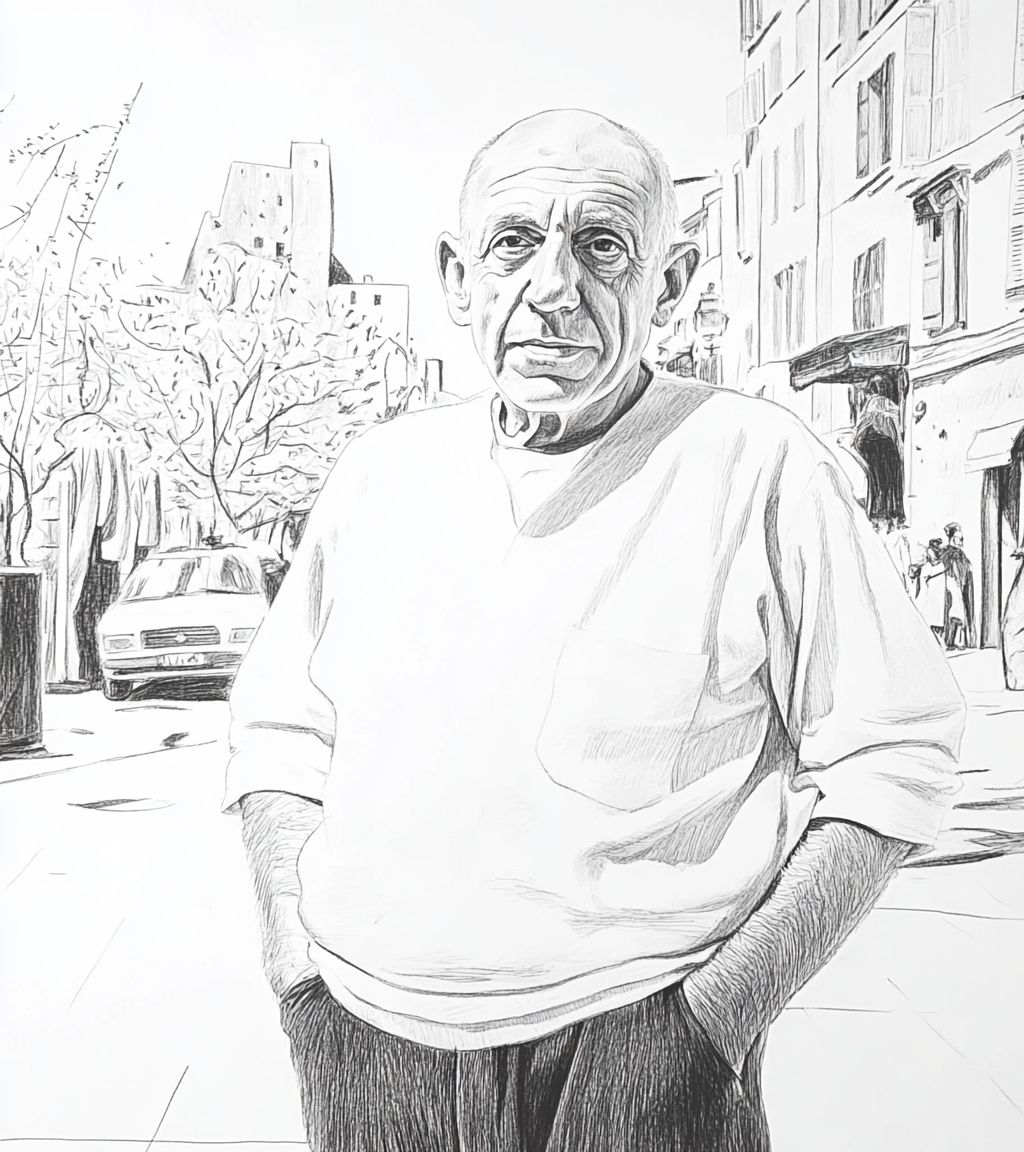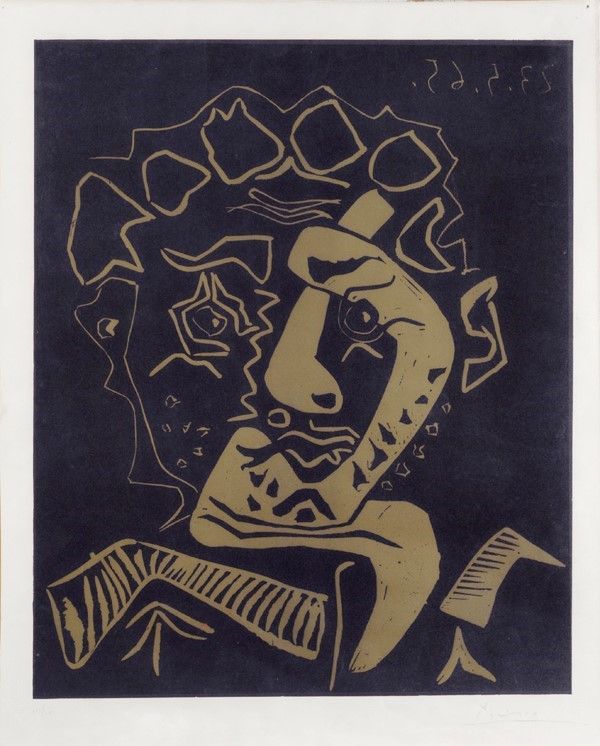
Pablo Picasso
Pablo Picasso demonstrated exceptional artistic talent from a young age. He studied art formally in Barcelona and Madrid before moving to Paris in 1904, where he became a central figure in the modern art movement. Over the course of his long and prolific career, Picasso worked across multiple disciplines — painting, sculpture, printmaking, ceramics, and stage design — and is widely regarded as one of the most influential artists of the 20th century.
Picasso is best known for co-founding cubism alongside Georges Braque, a radical artistic movement that deconstructed objects into geometric forms. His style evolved continuously, marked by distinct periods such as the Blue Period, the Rose Period, and later, his experiments with cubism, surrealism, and neo-classicism. A master of reinvention, Picasso explored emotional depth, political commentary, and formal innovation throughout his work. He frequently depicted themes such as love, mythology, and personal relationships, with a bold and expressive visual language.
Among Picasso’s most iconic works are Les Demoiselles d’Avignon (1907), Guernica (1937), The Weeping Woman (1937), and Girl before a Mirror (1932). His works have been exhibited in nearly every major art institution worldwide. Key exhibitions include retrospectives at MoMA (New York), Musée Picasso (Paris), and the Reina Sofía Museum (Madrid).
Collected by major institutions and notable private collectors:
— National Gallery of Art, Washington, D.C.— San Francisco Museum of Modern Art (SFMOMA)
— Museo Reina Sofía
— Musée Picasso Paris
— Tate
Notable sales and auction records:
— Les femmes d'Alger (Version 'O'), USD 179,3 million at Christie's, New York, 2015— Femme à la montre, USD 139,3 million at Sotheby's, New York, 2023
— Fillette à la corbeille fleurie, USD 115 million at Christie's, New York, 2018
Artworks and Paintings
Biography and Artistic Career Highlights
Pablo Picasso was born on October 25, 1881, in Málaga, Spain, into the family of painter and drawing teacher José Ruiz Blasco. From an early age, he showed exceptional talent for drawing. His childhood unfolded in an artistic environment: his father taught him academic fundamentals, while his mother encouraged his creativity. By the age of ten, he was already painting his first serious works.
1891 — the family moved to La Coruña, and later to Barcelona, where the young Picasso studied at an art school and quickly surpassed his peers.
1897 — entered the Royal Academy of San Fernando in Madrid, but the rigid academic system did not satisfy his artistic search, and he soon abandoned his studies.
1900 — first trip to Paris, where he became acquainted with the avant-garde art scene.
1901–1904 — the “Blue Period,” when the artist created somber, tragic works such as “The Old Guitarist” and “Woman Sitting in a Café.”
1904–1906 — the “Rose Period,” marked by warmer themes, circus performers, and images of love.
1907 — painted “Les Demoiselles d’Avignon,” a groundbreaking work that initiated Cubism.
1908–1914 — together with Georges Braque, developed Cubism, moving through both the Analytical and Synthetic phases.
1917 — collaborated with Sergei Diaghilev and the Ballets Russes, creating stage sets and costumes.
1920s — became interested in Neoclassicism and Surrealism, introducing new qualities into his art. During this period, he painted monumental canvases and experimented with forms.
1937 — created “Guernica.”
1939–1945 — remained in France during World War II, continuing to work.
1940s–1950s — explored ceramics and sculpture, produced prints, and took an active role in public life, joining the Communist Party.
1955 — moved to the French Riviera, first to Cannes and later to Mougins, where he created numerous energetic and free-spirited painting cycles.
1960s–1970s — continued to work prolifically, revisiting earlier themes and reinterpreting the traditions of world art. His style grew increasingly expressive and personal.
On April 8, 1973, Pablo Picasso died in Mougins, France, at the age of 91. He was buried in Vauvenargues, near his château. Picasso’s legacy became a symbol of the artistic exploration of the 20th century: he radically transformed the language of painting, sculpture, and printmaking, leaving behind thousands of works and forever securing his place as one of the most influential artists of modern times.

